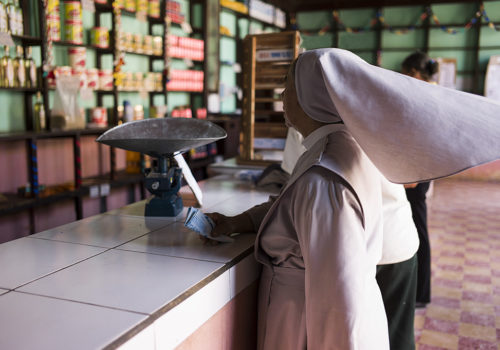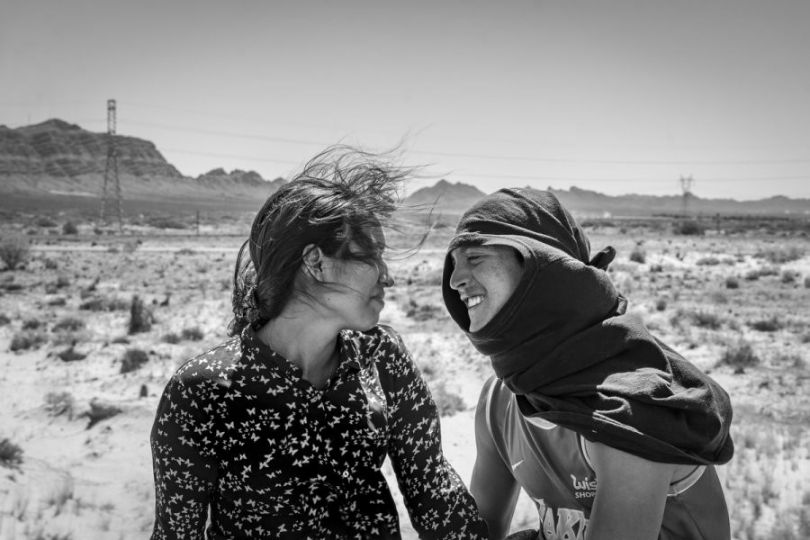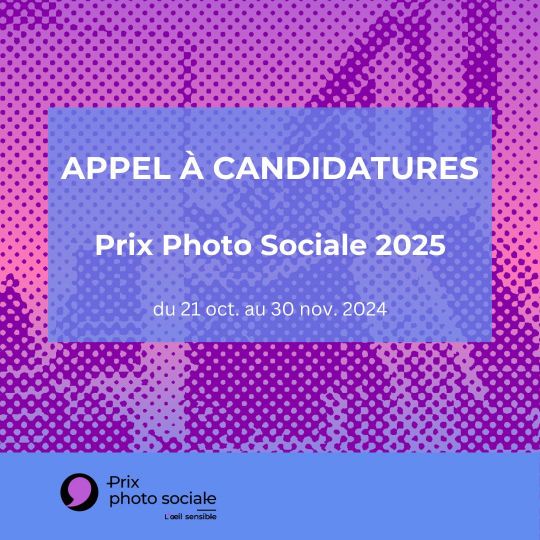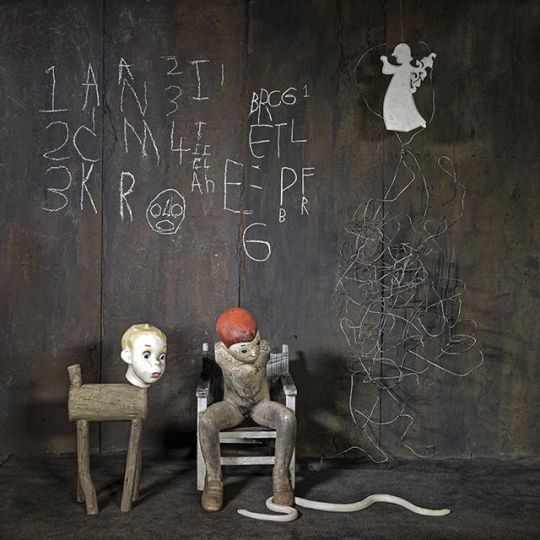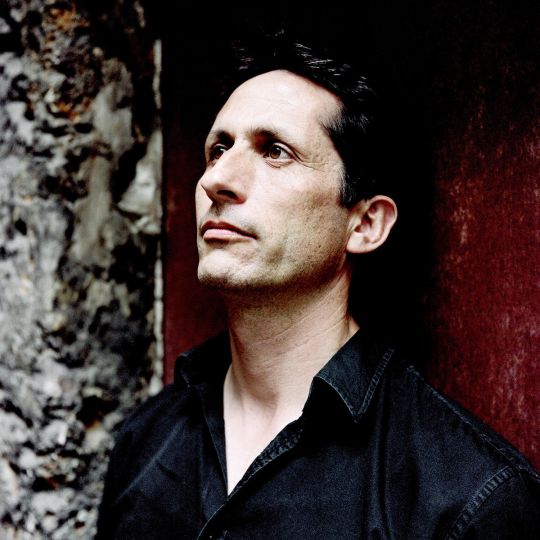I was invited to jury Castell Photography Gallery’s sixth annual exhibition, NEXT: New Photographic Visions, following in the footsteps of my mentor, collector and curator Wm. Hunt, now on view through December 20, 2014
I am grateful my life has been woven around “Photography’ – collaborating with museums, publishing houses, galleries and artists. My background began at a very specific moment in photographic history when most ‘Photography’ was not considered Art. When I look back at the key images I worked with starting out – Richard Avedon’s “In The American West” portraits and iconic fashion images; Peter Beard’s photographs out of Africa; Tod Papageorge and Saul Leiter’s street photography – and compare the important position their Photographs hold in today’s Art world, my appreciation for the ever-changing definition and inherent richness of photography continues.
In this call for entries, I was looking for “contemporary photo based works. Exceptional photography with a unique perspective and a cohesive look from a single unified body of work.” Not unlike a prism that refracts and individualizes a whole, each selection seeks a new path and voice in our world of photography. These were the images I returned to over and over from this group of entries. Skilled, unusual and distinctive, each made me want to look further.
JESSICA HINES: First Place
Jessica Hines is an award winning American artist and storyteller. “She uses the camera’s inherent quality as a recording device to explore illusion and to suggest truths that underlie the visible world. At the core of Hines’ work lies an inquisitive nature inspired by personal memory, experience and the unconscious mind.”
Hines work has won numerous awards including the Prix de la Photographie Paris PX3; 2014 Moscow International Foto Awards; 2013 PDN Photography Annual; Grand Prize, Lens Culture International Exposure Awards, Paris; the Kolga Award for Best Experimental Photography, Tbilisi, Georgia; among many others. International exhibitions include: Buenos Aires, Argentina; Tbilisi, Georgia;, Belfast, Northern Ireland; Dublin, Ireland; Mâori: Te Whare Wânanga o Wairaka, Auckland, New Zealand; Wuhan, China; Ho Chi Minh City, Viet Nam; Xalapa, Mexico; Busan, Korea; Pingyao, China; Ludwigshafen, Germany; Paris, France and more. Her work continues to be seen in The New York Times and New Yorker Magazine.
EA: Is your image, Southern Stories #15,part of an ongoing series?
JH:Yes, Southern Stories developed out of my own curiosity, frustration, and fascination with life in the southern United States – a place where I have lived for years. This is “home” now and the place has cast a strange “spell” over me with its “dark” past that still haunts this landscape. At the same time though, the South has a quirkiness that I love, and a memorable beauty and charm – a place like no other. The images I produced for this series are made serendipitously, without anticipation or planning.
EA: Can you tell us something about the experience of shooting this image? What captured your attention to take this photograph?
JH: What I love so much about the photographic process, as I experience it, is the unexpected chance encounter. I was driving the back roads with my camera one day when I decided to stop at the remains of an abandoned store. Scattered around the yard were broken pieces of pottery, odds and ends and old furniture that had been left to weather for maybe a couple of decades or more. No one was in sight and the only sound I could hear was that of a nearby barking dog. After making my way around the yard, I ventured further out to the edge of an open field where, against a tree, and poking out from underneath a pile of leaves, I saw an old toy ship. It was weathered, too, and looked as though it must have lain there, undisturbed, for at least ten or maybe twenty+ years. What a treasure! I picked it up and set it on top of a branch, the barking dog and doghouse were right behind it. It all came together very suddenly. Perfect.
A few weeks passed and I returned to this spot, not far from my home, only to find the dog and doghouse were gone. No signs of life remained. Several months later, I returned again to find only an empty lot – the old store had been completely demolished and the area stripped bare of any signs that a building had ever existed in that space. Bare earth. When I pass that way again now, I feel mournful at that “blankness” that remains.
EA: How did you originally get involved in photography?
JH: My father was an artist who liked to use the camera and it was through him that I received my introduction to the “magic” box. When I was thirteen, my next-door neighbors bought for me my first 35mm camera as a Christmas gift, allowing me to further explore photography. Eventually, I earned a BFA from Washington University in St. Louis and an MFA from the University of Illinois at Urbana-Champaign. My path led me to teaching photography at the university level for the past three decades at Georgia Southern University.
EA: Is there a photography icon you met, would like to meet, or wish you had met, that has influenced or inspired you?
JH:Duane Michals has long been a figure who impressed me with his creative genius, charm and wit, his sensitivity, humor, and profundity. My dream of meeting him came true, on what turned out to be several occasions, and I later invited him to speak at Georgia Southern University where I teach photography. I even cooked dinner for him at home and it was as if I was seeing a vision when I happened to look over and see Duane sitting at my dining room table. Grateful for that.
I would love to meet Sophie Calle. When I was in Paris in 2010, I had the good fortune of seeing her show: All About Her Mother at the Palais de Tokyo. I feel a deep connection to her via our constructed imagery and intimate stories involving those close to us. Maybe one day our paths will cross and I will be lucky.
EA: Apart from developing a great body of work, what are your objectives; what are you working on NEXT?
JH: For the past eight years, I have been dedicated to a story-telling photography project, My Brother’s War. The story is a long and complex one but in short, my brother, Gary, went to war in Viet Nam, returned with PTSD and committed suicide about ten years after returning home. Because vets from that war were not welcomed back home in the US, he moved to Colorado to escape the hostile society and to try to readjust to civilian life. I was a young child when he left and was sent away to live with a number of foster parents until I was in high school. I never had the chance to really know Gary because we didn’t live in the same state. When I did visit my parents twice a year, Gary was either in Viet Nam or Colorado so we met only once in that time and I didn’t see him again until I was much older. Our time together was cut away and cut short.
I’ve retraced his “footsteps” using his letters, photographs and memorabilia. Twice I’ve visited Viet Nam to see the place where he was stationed, Chu Lai; and I’ve made so many discoveries. At this point, I am nearing the end of this work and finishing the final images and text before looking for a publisher.
MAGDALENA SOLÉ: Second Place
Magdalena Solé, born in Spain and raised in Switzerland, is now based in New York City and Vermont. Solé is known for capturing personal images from various cultures through distinctive color artistry. She spent a year interviewing and photographing hundreds of residents in the Mississippi Delta, for a stunning portrait of the region in her book, “New Delta Rising” and exhibition at the Leica Gallery, NY. Profoundly affected by photographing in Tohoku, the hardest hit region of Japan where the Tsunami occurred, she returned to photograph there several times exhibiting this work internationally.
EA: Is your image, Gust of Wind,part of an ongoing series?
MS: The photograph of the nun is part of my series, Cuba, Hasta Siempre, named after the 1965 song “Hasta Siempre, Comandante”, or simply “Hasta Siempre”, by Cuban Composer Carlos Puebla. The song’s lyrics echoed revolutionary Che Guevara‘s farewell to Cuba.
“Cuba, Hasta Siempre” translates roughly into “Cuba, Forever”. Cuba has been frozen in time for the past 50 years. Fidel’s power that opposes any change was cemented by the U.S. embargo. Cubans long for modernity and a life with the basic comforts we take for granted. My project is to document Cuba as it slowly emerges into modern times. On a personal level my Cuba is remembering things past, reconnecting with times lost of my early childhood in Spain, a place similar to today’s Cuba.
EA: Can you tell us something about the experience of shooting this image? What captured your attention to take this photograph?
MS: This photograph was taken in a little country store in the far eastern Cuban countryside near Viñales. I entered the store with my camera following some chickens. I looked up and there was the nun buying some eggs. While taking her picture a gust of wind lifted her hair cover.
What never tires me of the camera is the magic of being able to capture a fleeting moment. In a picture a brief 1:250 of a second stands still for us to see. In just one hour there are 900,000 such moments to capture. This is why I never want to stage a scene; I much prefer the art and joy of anticipating a special moment that will never reoccur.
EA: How did you originally get involved in photography?
MS: My first picture was of my beloved guinea pig. I was 7 and have never abandoned the camera since. My formal training is in motion pictures: I have a Master of Fine Arts in Film from Columbia University.
EA: Is there a photography icon you met, would like to meet, or wish you had met, that has influenced or inspired you?
MS: My icon is Ichiro Kojima who I never met and who unfortunately died in 1964. I was in Japan and by accident came upon his book. Though I usually photograph in color and Kojima’s work is in black and white his photographs were the most beautiful and startling that I had ever seen. There was not a single image that didn’t transport you through his imagination to a unique time and place.
EA: Apart from developing a great body of work, what are your objectives; what are you working on NEXT?
MS: I am currently working on two projects and about to embark on a new one. One project is “The Ghost Towns of Fukushima, Japan” resulting from the 2011 Tsunami and the nuclear fallout. The other project is “Cuba: Hasta Siempre,” which I mentioned earlier. My new project will be titled “Snow Country” and will be the first time I will explore black and white.
RUBEN NATAL-SAN MIGUEL: Third Place
New York City-based photographer, Ruben Natal-San Miguel, born in Arecibo, Puerto Rico, also holds a Bachelor and Master Degree in Architecture from Boston Architectural College and Finance and Business Administration from Boston University. His photography has been shown internationally, and published in The Atlantic, Aperture, Daily News and Urban Italy Magazine; and won the Photo District News (PDN Magazine) Portrait Competition. I am a fan of his bold, authentic images from the streets of Harlem, which Natal-San Miguel said, “captures the last vestiges of a rich street culture before the imminent gentrification in Harlem.”
EA: Is your image, Lady Money Sings The Blues, 2011 Harlem, NYC,part of an ongoing series?
RNSM: Yes, it is part of a 10-year project called NYC: Concrete Jungleof work in all 5 Boroughs of NYC.
EA: Can you tell us something about the experience of shooting this image? What captured your attention to take this photograph?
RNSM: The subject of the photograph is Billie Jean, a longtime Harlem resident and Cotton Club Jazz singer. Her look and demeanor evokes that old NYC style, presence, endurance, perseverance and uniqueness that, due to the aggressive gentrification keeps disappearing from the city’s street culture. I took several photos of her, but this one was my favorite, just at the precise moment she was writing her phone number for me. There was something very soulful, vulnerable and genuine about the moment.
EA: How did you originally get involved in photography?
RNSM: I am 100% self-taught. I did not attend college for Photography. I am a trained Architect and learned photography by collecting it, reading and studying about it, selling and curating exhibitions. My trained eye in design always helps me to compose the photographs in my head.
EA: Is there a photography icon you met, would like to meet, or wish you had met, that has influenced or inspired you?
RNSM: Susan Meiselas, who I had the honor to interview for the 2009 Lucie Awards. A few months later she approached me and I worked with her as a collaborator on a Flag Project that a museum in Paris, France commissioned. I photographed with her in the Bronx, Harlem and the Lower East Side. The final was a photo and video presentation in which my voice explains the sentiments behind the Puerto Rican Flag and why there is a strong fervor and love about it.
EA: Apart from developing a great body of work, what are your objectives; what are you working on NEXT?
RNSM: I started a new project that has to do with how we tend to miss the great architecture of NYC by not looking up. It will address the fact that since we live in such fast pace life with our faces buried in our phones, we pass by every day the most majestic architecture, and hope to bring attention to it.
JENNIFER McCLURE: Honorable Mention
Jennifer McClure is a fine art and documentary photographer based in New York City. Born in Virginia and raised all over the Southeast. “As the child of a Marine she moved frequently and traumatically. She decorated her walls with traces of her past; photographs became anchor points.” After acquiring a B.A. in English Theory and Literature, she returned to Photography in 2001, taking classes at the School of Visual Arts and the International Center of Photography. She is currently a teaching assistant at ICP. Her work has been exhibited in numerous shows and publications, and most recently was awarded CENTER’s Editor’s Choice by Vanity Fair’s Susan White. I’m a big fan of McClure’s intimate introspective images.
EA: Is your photograph, Untitled, part of an ongoing series?
JM: This image is from a series called “Laws of Silence“, which is about personal mythology and fear of letting go of the life I was programmed to live. I was taught that having a family and a home and a church and a regular job meant that I was successful. My own family life was difficult and displaced, not something I wished to replicate, and left me distrustful of both people in general and the whole idea of the American Dream. I didn’t buy into any of it, but I didn’t know how to rewrite the story line. Eventually I realized that l don’t have to, that I just have to be comfortable with the unknown. The water is an important part of this series because I had a bad experience in the water as a child; I love the water but I’m also afraid of it. I often feel the same way about people. I’ve learned that neither is as scary as I’ve let them become in memory, that what feels overwhelming can actually be soothing and healing.
EA: Can you tell us something about the experience of shooting this image? What captured your attention to take this photograph?
JM: I wanted to show the experience of immersing myself in something that terrifies me, of feeling lost and groundless but doing it anyway. I had just put myself out there in a personal relationship and it didn’t work out, so I was feeling very vulnerable. I wanted to disappear. I had only intended to show myself awkwardly underwater with no real frame of reference, and the bubbles were an unexpected surprise. We shot it in my friend’s pool with a cheap underwater camera. We both had to go under at the same time and shoot blindly and hope for the best. I had no idea if we got anything until I got home.
EA: Is there a quote – your own or anyone else’s – or descriptive paragraph to accompany your image/this series?
JM: ……I read that Thomas Roma likens the making of photographs to Robert Frost’s idea of making a poem: “A poem begins with a lump in the throat; a homesickness, a lovesickness.” My pictures come from that emotional space of longing, of wishing for things that never were and might never be. I don’t know if I’m telling a story as much as trying to find a way out. I can only see a feeling clearly when I disarm and immobilize it, pin it to the wall and examine it with the others.
EA: How did you originally get involved in photography?
JM: I shot a little for an independent newspaper in college, but I never took classes. I was en English Lit major, and I didn’t realize the storytelling power of photography until much later. I started taking continuing education classes at SVA and then moved to ICP. I was shooting anything and everything. The first real series I did was about nine years ago. I had just gotten clean and sober but I wasn’t really comfortable with the idea. I put an ad in the Village Voice to photograph substance abusers. We spent a lot of time together, and I got to ask them the questions I was afraid to ask of myself. We had different circumstances, but the same emotions and desires and needs, the same flawed coping mechanisms. This is what fascinates me, whether I am photographing myself or others: how we come to be the people we are, and how we choose to handle the lots we are given. Since then, I’ve continued to take classes that focus on this aspect of photography, the emotional rather than the technical.
EA: Is there a photography icon you met, would like to meet, or wish you had met, that has influenced or inspired you?
JM: I recently met Sophie Calle at an opening. We weren’t introduced, but I told her I loved her show and I took a picture of her feet. I would love to have a conversation with her. The photographer who has had the biggest influence on me is Amy Arbus. I took her class as a student and then continued on for many years as a teaching assistant. I can’t begin to condense everything I learned from that experience, but here’s the most important: there is often a huge difference between intention and execution, there is no shame in reshooting, you must be genuinely interested in your subjects, and your photos have to tell a story. I was also lucky enough to meet Elisabeth Biondi. Her editing skills and advice are truly phenomenal.
EA: Apart from developing a great body of work, what are your objectives; what are you working on NEXT?
JM: I’m starting a new project on single people. I read recently that more than half of all Americans are now single. Some are happily single, some are looking, and some have given up. I’m looking to photograph all types, all ages. I can’t wait to hear these stories.
SHERI LYNN BEHR: Honorable Mention
Native New Yorker, Sheri Lynn Behr, was a very successful ‘70’s Rock and Roll photographer, shooting the likes of Led Zeppelin, U2, Iggy Pop, The Ramones, Lou Reed, and Meat Loaf for Rolling Stone Magazine, among others. Behr’s series focus’s on privacy and surveillance, dealing with electronic surveillance and hidden camera’s watching us everywhere. As Behr states, “….we live in a post-privacy world, an image-obsessed society where cameras are everywhere. With or without our knowledge, we are being photographed countless times a day.”
EA: Is your image, NYC-1 (Picturing You Picturing Me), part of an ongoing series?
SLB: NYC-1 (Picturing You Picturing Me) is from my series NoMatterWhere, which deals with photography without permission, privacy and surveillance.
EA: Can you tell us something about the experience of shooting this image? What captured your attention to take this photograph?
SLB: So many people are taking pictures at museums these days; I really had no problem making this photograph. The ceiling, with all the lights, is so different, so bold, and it just seemed like that was what I was aiming to capture. Of course, the surveillance camera was what made it interesting to me, hiding in plain sight.For NoMatter Where, I point my camera at the cameras that are watching me, some more noticeable than others. While I certainly believe Big Brother can be useful, I also think we need to be more aware of the scope of surveillance in our daily lives-and how it impacts our privacy. I make these photographs to raise questions that come from the claustrophobic sense of being constantly observed, no matter where we are.
EA: How did you originally get involved in photography?
SLB: Although I was making photographs before I took any classes, I studied photography at The New School and School of Visual Arts in New York. I never went for a degree, though I probably took enough classes to get one.
EA: Is there a photography icon you met, would like to meet, or wish you had met, that has influenced or inspired you?
SLB: That’s a tough one – I admire so many photographers. Someday I’d like to meet Michael Wolf. I love his work, and his projects Tokyo Compression and Transparent City have had an impact on my work.
I wish I could have met Edward Weston. He could take the most mundane items, like his peppers, and make such incredibly beautiful photographs.
EA: Apart from developing a great body of work, what are your objectives; what are you working on NEXT?
SLB: NoMatterWhere is one of several series I’m doing on privacy and surveillance. I’m in the process of getting them all finished, and then I want to make a book and an installation from the work. And after that… we’ll see. I’m always taking photographs. Maybe I’ve already started a new project and haven’t realized it yet.
EXHIBITION
NEXT: New Photographic Visions
November 7 – December 20, 2014
Castell Photography Gallery
2C Wilson Alley
Asheville,
North Carolina USA
http://www.castellphotographygallery.com
http://jessicahines.com
http://www.solepictures.com
http://artmostfierce.blogspot.com
http://www.jennifermcclure.com
http://www.sherilynnbehr.com

